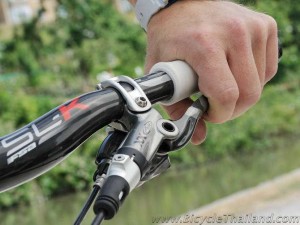Hydraulic disc brakes use two metal-backed pads held in place by magnets and/or springs. Hydraulic actuated pistons inside the brake caliper push the metal-backed pads against a metal rotor that is attached to the bicycle’s hubs by either bolts (4, 5, or 6 bolt pattern) or a centerlock rotor system. Companies like Shimano, DT Swiss, and Mavic make an adapter which enables you to use bolt-style rotors with centerlock style hubs.
Proper function of a hydraulic disc brake depends on five factors:
- the rotor must be straight, smooth and clean,

- the caliper mechanism must be properly installed on the frame and aligned with the rotor,
- the disc brake pads must be installed and positioned correctly,
- the disc brake pads must have sufficient material remaining, and
- the hydraulic brake lines must be functioning properly; the lines should not have air bubbles, leaking bladders (at the lever reservoir), or loose connections at the lever mechanism and brake caliper.
STEPS FOR INSPECTING AND SERVICING YOUR DISC BRAKES
Check rotor, pad thickness, and caliper position.
Changing the brake pads.
Insert each new brake pad. All brake pads are specific for inside versus outside (and top versus bottom). Pay special attention when removing old brake pads. Align and insert new brake pads in the same manner as old brake pads were removed. Push the new brake pads back into the caliper until you feel it click into place against the magnetic pistons on each side of the caliper. Make sure the pads are seated correctly. If a pad is inserted incorrectly, the gap for the disc rotor will not be correct and you’ll most likely experience difficulty when reinserting the wheel.
Aligning the caliper mechanism.
Adjust brake lever reach.


Hi, I am trying to purchase 8 of 22 mm replacement pads (discs) for my bicycle brakes here in Surin however none of the shops (including the ones listed on your webpage) seem to sell them anymore although they were available about a year ago. Could you please tell me if I can buy them from you direct or who else might sell them? Thanks from Nick
The shape of the brake pad is very important. Please send us make (Shimano, SRAM, etc.,?) and model (STX, XT, etc.,?) of disc brake as well as a photograph of the the brake caliper itself to Sales@BicycleThailand.com